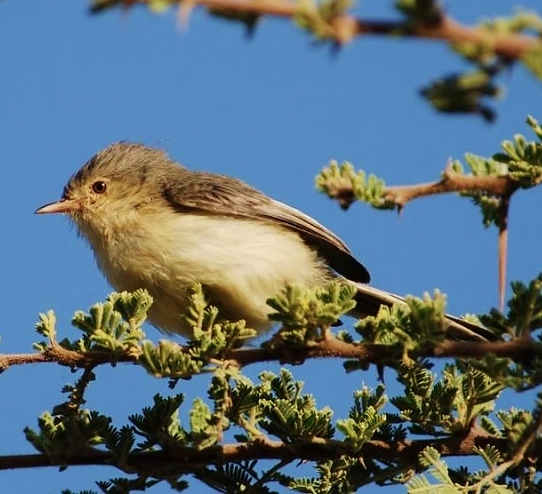 |
| Photo by Volker Sthamer (Bird Forum) |
Common name:
buff-bellied warbler (en); felosa-das-acácias (pt); phyllolaïs à ventre fauve (fr); prinia ventripálida (es); akaziensänger (de)
Taxonomy:
Order Passeriformes
Family Sylviidae
Range:
This African species is found in two separate populations. One is found in northern Nigeria, northern Cameroon, southern Chad and southern Niger, while the other is found further east, from southern Sudan, through Ethiopia, Kenya and Uganda and down to Tanzania.
Size:
These birds are 10 cm long and weigh 6 g.
Habitat:
These birds are mostly found in dry savannas and other Acacia woodlands, favouring areas dominated by Acacia xanthophloea and Acacia abyssinica. They are also found in dry scrublands and rural gardens.
Diet:
The buff-bellied warbler feeds on aphids, scale insects, insects larvae and spiders, often foraging in mixed-species flocks on the branches of Acacia trees.
Breeding:
They breed in April-October. The nest is built by both sexes, consisting of a purse-shaped bag with a side entrance near the top, made of vegetable down, Acacia bark and spider webs. it is placed in a thorny scrub or young Acacia 1-9 m above the ground. There the female lays 2-4 white, light green or greenish blue eggs with brown spots. The eggs are incubated for 12 days and the chicks fledge around 16 days after hatching.
Conservation:
IUCN status – LC (Least Concern)
This species has a very large breeding range and is described as rare to common. The population is suspected to be stable in the absence of evidence for any declines or substantial threats.







